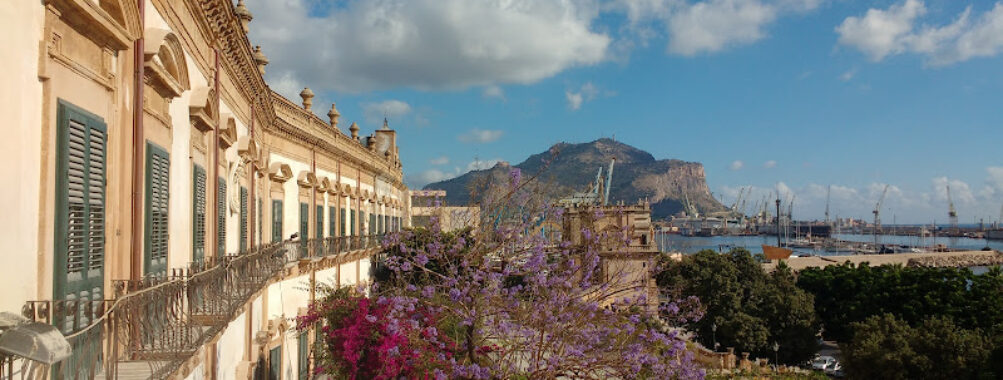
Palazzo Butera
Table of Contents
Description
Palazzo Butera is one of those places in Palermo that sneaks up on you. At first glance, it’s a massive baroque palace overlooking the sea in the Kalsa district, but once you step inside, you realize it’s much more than just a historic building. It’s a living, breathing cultural hub. The palace, which dates back to the late 1600s, has been carefully restored and reimagined into a museum and research center, thanks to the vision of Massimo and Francesca Valsecchi. They poured their energy into transforming it into a space where art, history, and modern creativity all meet.
Walking through the halls, you’ll feel the weight of centuries of Sicilian aristocratic life, but also the freshness of contemporary art installations. It’s not a stuffy museum experience; it’s more like being invited into someone’s eclectic home, where every room tells a different story. And while most visitors leave glowing reviews about the grandeur and the art collection, there are a few who feel it’s a bit overwhelming or not their cup of tea. Honestly, that’s part of the charm—it’s a place that sparks strong reactions. Personally, I found myself lingering on the terrace longer than expected, just staring at the sea and thinking about how many people have stood in that very spot over the centuries.
It’s also worth pointing out that the palace isn’t just about art. It’s about creating a new cultural gateway for Palermo, a project that feels ambitious and forward-looking. You’ll find a restaurant, accessible facilities, and even family-friendly spaces, which makes it easy to spend a few hours here without feeling rushed. If you’re the type who loves both history and modern art, this is a must-see. If you’re not, well—you might still be surprised by how much it draws you in.
Key Features
- Magnificent baroque architecture with sweeping sea views
- Permanent and rotating exhibitions from the Valsecchi collection
- Spacious terrace overlooking the Mediterranean
- Wheelchair accessible entrances and restrooms
- Onsite restaurant and restrooms for convenience
- Family-friendly environment, welcoming for children
- Free parking options nearby, both lot and street
- Blend of historical heritage and contemporary art
Best Time to Visit
The best time to visit Palazzo Butera depends a little on your travel style. If you’re someone who loves warm weather and doesn’t mind a bit of a crowd, spring and early summer are fantastic. The palace’s terrace is especially stunning when the sun is out, and the sea sparkles right in front of you. That said, I personally prefer the quieter months like late autumn. The air is cooler, the crowds are fewer, and you can take your time wandering through the exhibits without feeling rushed. Plus, Palermo in the off-season has its own kind of magic—slower, more authentic, and easier on the wallet.
Avoid the peak midday hours if you can. The museum is indoors, yes, but you’ll appreciate the art more when you’re not coming in hot and tired from walking around the city. Morning visits tend to be calmer, and if you’re lucky, you might even find yourself with a gallery room all to yourself.
How to Get There
Getting to Palazzo Butera is pretty straightforward if you’re already in Palermo. The palace is located in the historic Kalsa district, which is one of the most atmospheric parts of the city. If you’re staying nearby, it’s an easy walk through streets lined with old churches, little cafés, and colorful balconies. For those coming from further out, taxis and ride-share apps are reliable, and public buses stop within walking distance as well.
Driving is possible, and the palace does offer free parking options, both in a lot and on the street. But honestly, unless you’re already renting a car for a road trip around Sicily, I’d advise against driving in central Palermo—it can be chaotic, and finding a spot isn’t always as smooth as it sounds. Walking remains the best way to soak in the neighborhood before stepping inside the palace.
Tips for Visiting
Here are a few things I wish I had known before my first visit:
- Take your time: Don’t rush. Palazzo Butera is not a quick in-and-out kind of place. Give yourself at least two to three hours to explore properly.
- Check for temporary exhibitions: The permanent collection is impressive, but the rotating shows often bring in surprising works that add another layer to the visit.
- Bring kids if you have them: The palace is surprisingly child-friendly, and it’s a good way to introduce younger ones to art in a less intimidating setting.
- Use the terrace as a pause point: After wandering through the art, step outside, breathe in the sea air, and just let it all sink in. It’s one of the highlights.
- Accessibility is solid: If you or someone in your group needs wheelchair access, you’ll find the facilities here well thought out.
- Eat onsite or nearby: The restaurant inside is convenient, but the Kalsa district also has plenty of trattorias and street food spots worth trying afterward.
And one last thing—don’t be afraid to form your own opinion. Some people absolutely rave about Palazzo Butera, while others walk away scratching their heads. That’s the beauty of it. Art and history aren’t supposed to please everyone in the same way. Go in with an open mind, let yourself wander, and see what sticks with you. For me, it was the contrast: the grandeur of a centuries-old palace filled with modern, sometimes even quirky, works of art. That mix is what made it unforgettable.
Location
Places to Stay Near Palazzo Butera
Find and Book a Tour
Explore More Travel Guides
No reviews found! Be the first to review!